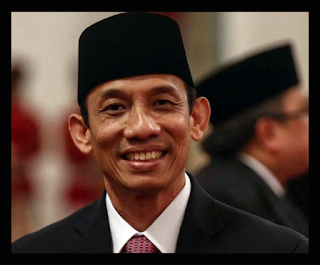Ministry of Energy and Mineral Resources (ESDM) decided to auction 43 oil and gas blocks by 2018. A total of 40 blocks of which are conventional blocks. The remaining 3 oil and gas blocks are nonconventional blocks.
Secretary General of Oil and Gas Ministry of ESDM Ego Syahrial said the block to be auctioned is a combination of unlawful blocks in 2017.
"As well as a mix of non-salable blocks auctioned in 2015 and 2016," he said.
In detail, 40 conventional oil and gas blocks consist of 25 unfair blocks in 2015, 2016, and parts of the new block. The 25 blocks, among others, Rupat Labuhan, South CPR Nibung, Batu Gajah Dua, Bukit Barat, South Tuna, Tongkol, Banyumas, Ampuh, Bast Sepanjang-Kangean and Kasongan Sampit.
oil and gas blocks
Then, Southwest Bengara, Surernana I, Mamuju Manukra, South East Mandar, Karaeng, Ebuny, and East Tanimbar. As well as West Berau, Onjn, Kasuri II, Kasuri III, West Kaimana, North Arguni, and Mamberamo. The remaining 15 blocks are terminated in 2017.
The blocks include Air Komering, East Sokang, East Muriah, North Kangan, Palangka Raya, West Sangata, Belayan, and Southest Mahakam. Then, South Sageri, Halmahera Kotiau, Southwest Bird's Head, Semai IV West Papua III, Cendrawasih Bay II, and Cendrawasih Bay III.
For the three non-conventional blocks, there are MNK Southeast Sumatra, MNK Iembar Rimba, and southern GMB Sumatera. According to the plan, the auction will be conducted in late February or early March 2018. For the 43 blocks, the gross split contract scheme is used.
IN INDONESIA
Maret, Lelang 43 Blok Migas
Kementerian Energi dan Sumber Daya Mineral (ESDM) memutuskan melelang 43 blok migas pada 2018. Sebanyak 40 blok di antaranya merupakan blok konvensional. Sisanya 3 blok minyak dan gas adalah blok nonkonvensional.
Sekretaris Jenderal Migas Kementerian ESDM Ego Syahrial menyatakan blok yang akan dilelang tersebut ialah gabungan dari blok yang tidak laku pada 2017.
"Serta gabungan dari blok-blok yang tidak laku dilelang pada 2015 dan 2016,” ujarnya.
Jika diperinci, 40 blok migas konvensional itu terdiri dari 25 blok yang tidak Iaku pada 2015, 2016, dan sebagian blok baru. Sebanyak 25 blok tersebut, antara lain, Rupat Labuhan, South CPR Nibung, Batu Gajah Dua, Bukit Barat, South Tuna, Tongkol, Banyumas, Ampuh, Bast Sepanjang-Kangean, dan Kasongan Sampit.
Kemudian, Southwest Bengara, Surernana I, Manakarra Mamuju, South East Mandar, Karaeng, Ebuny, dan East Tanimbar. Serta West Berau, Onjn, Kasuri II, Kasuri III, West Kaimana, North Arguni, dan Mamberamo. Sisanya sebanyak 15 blok merupakan hasil terminasi pada 2017.
Blok itu meliputi Air Komering, East Sokang, East Muriah, North Kangan, Palangka Raya, West Sangata, Belayan, dan Southest Mahakam. Kemudian, South Sageri, Halmahera Kotiau, Southwest Bird's Head, Semai IV West Papua III, Cendrawasih Bay II, dan Cendrawasih Bay III.
Untuk tiga blok non-konvensional, ada MNK Sumut Tenggara, MNK Iembar Rimba, dan GMB Sumatera bagian selatan. Rencananya, Ielang dilakukan pada akhir Februari atau awal Maret 2018. Untuk 43 blok tersebut, digunakan skema kontrak gross split.
Jawa Pos, Page-5, Saturday, Jan 20, 2018



















